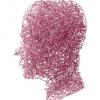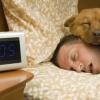So your cholinergic system is hyperactive, your serotonergic system is fine-ish (that may change as you fix the root cause), and your endorphins seem to be better than average at baseline. You have a pretty good idea that it is dopaminergic yet you respond poorly to several dopaminergics... which I'm not sure what that means in each case. If you can break down into a paragraph each drug/supplement and how it affected you, that would help us find any bright spots. Sometimes the reasons we avoid drugs are for the side effects, and not only might there be alternatives with less side effects, sometimes that sacrifice is the one we need to make because there are other ways of managing side effects whether mentally, lifestyle adjustments, or just by taking an adjunct therapy.
You say you are not pessimistic, so I'll take your word for it. Your lifestyle is not what you'd like it to be, playing and eating in your free time. So you would like something to make you more serious, right? More motivated to do things that matter?
Drug List to Try:
1. An SSRI or Zembrin. This will help you cope with the side effects from caffeine. Dopamine can be enhanced once the hippocampus is able to perform its duties correctly. Alternatively, meditative or holotropic breathing has a similar effect on grey matter.
2. An SNRI. The serotonin will take the edge of the norepinephrine bump. Trade names like Cymbalta and Effexor fall into this category.
3. An NDRI with an NDRA. Dopamine and norepinephrine enhance the properties of one another. You have already tried bupropion to no avail but have no combined it with a release agent and amphetamines are not allowed. Methylphenidate is both an NDRI and NDRA like amphetamines. Releasing the catecholamines and preventing their uptake has a combined effect greater than the sum of the parts. Release agents like amphetamines and methylphenidate should be slow released throughout the day because the crash is intense when your body goes to start storing the catecholamines in vesicles again.
4. An NRI. You may just need an NRI, as is the case with me. I am on atomoxetine. It raises dopamine levels by raising norepinephrine levels primarily. The NET also has an effect on dopamine transport. Norepinephrine also has affinity for some dopamine receptors.
5. Magnesium water. Use at night for sleep.
6. Partial NMDA antagonist like Memantine. Use in conjunction with another dopaminergic for a combined benefit.
7. & 8. Pramiracetam & Aniracetam. You respond well to Piracetam. Might as well try another analogue and go that route.
9. Tumeric plus an adaptogen. A lot of people notice this has a motivating effect.
10. Methylene Blue. 5-15mg 2x a day. Makes my thoughts more fluid, also can give me a boost. Long term high doses not recommended, but a once in a while burst for focus is fine, given a recovery period. Has a hormetic response curve.
11. Maritime Pinebark Extract. It's no body high or what not, but it does have an ability to stabilize your energy levels. Since you are sensitive to tea, you may be a high responder, since it has similar compounds in more complex forms.
12. Check for vitamin B deficiencies. High levels of Vitamin B6 and B1 can be quite motivating.
13. Check your blood sugar. You may be suffering from mental fatigue and just need a little picker upper. Test by eating a pickle or something with vinegar. Acetic acid (vinegar) is one of the compounds sugar is made into to become energy. This may mean you have to change your diet if this is the case.
14. Check your potassium levels. Low potassium can cause all sorts of problems.
15. Check for allergies. Gluten is big globby mess
of molecules and oligimers. Milk has a bunch of allergens too.
16. Check your social connections. You sound like you have low internal supervision, so maybe you need an accountability partner or group. I joined a business Meetup once, and that really helped. You can start by telling us what you'd actually like to do in your free time.
It's not a thousand things, but it is a start.
Edited by devinthayer, 18 September 2016 - 04:59 PM.























































